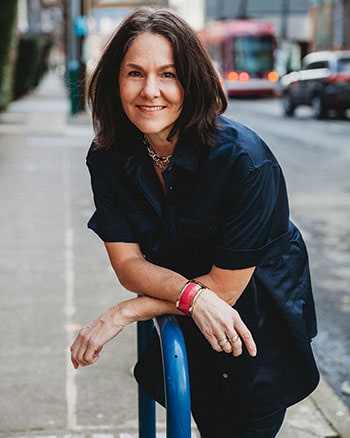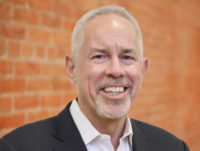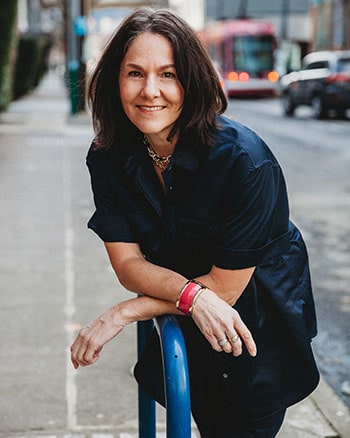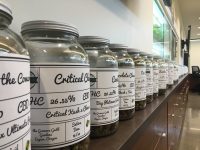At the end of March, New York state lawmakers approved the Marijuana Regulation and Taxation Act, making it the 17th state in the U.S. to legalize cannabis for adults 21 and older. The bill establishes a new regulatory body, the Office of Cannabis Management, to oversee the new adult-use program, in addition to the existing medical and hemp markets. Other provisions are detailed in the bill; however, much of the regulatory framework has yet to be decided, leaving the 10 existing medical cannabis companies operating in the state in limbo. Cannabis Business Times spoke with Hillary Peckham, chief operating officer of Etain, an independent, women- and family-owned medical cannabis operator with a cultivation facility and four dispensaries in New York, to get her take on the bill and how the company plans to transition into the adult-use market.
Michelle Simakis: What aspects of New York’s adult-use cannabis bill that have been outlined so far do you like?
Hillary Peckham: I think it’s really incredible they have passed legislation with an initiative for diverse business ownership. That’s something we really support, especially trying to foster small business social equity licenses and MWBEs [minority- or women-owned business enterprises]. (Editor’s Note: The bill indicates the state’s social and economic equity program will include a goal to allocate 50% of licenses to a minority- or women-owned business, distressed farmers or service-disabled veterans.) As a woman-owned business, we’re very supportive of that effort.
MS: What are your concerns about the bill?
HP: Things we are looking out for, which we won’t know more until regulation, would be ensuring that there’s a commitment to the medical program’s success after legalization starts, because most states you see the medical program decline or basically go away. And to make sure the support for [MWBE] businesses isn’t just to give them a license, but that there’s ongoing support and commitment to fostering growth for those companies that extends beyond just the initial licensing. There [are] proposed startup loans. I think that will be really important because cannabis businesses are very capital intensive, and it’s really hard to find capital without traditional financing. Additionally, in other industries New York set goals for purchasing from MWBEs for state contracts, and something similar to that to make sure there’s ongoing commitment to support and purchase from suppliers or retailers in those special category licenses I think will be great.
MS: As it’s written now, medical cannabis companies can remain vertically operated and add up to four stores, in addition to the four medical dispensaries you already have. Do you plan to transition into the market, and what would be the first step?
HP: We are still waiting on details on what that’s going to look like. We can add four more stores. Two need to be in underserved areas, and there’s no definition for that. So we’re still trying to figure out what that means and where we can site. If they can make medical changes soon, that will be really great, because we’ve been waiting years now for some modernization to the program, and I think that it will be really great for patients to get access sooner and for expanded product capacity. We’re still committed to the medical program.
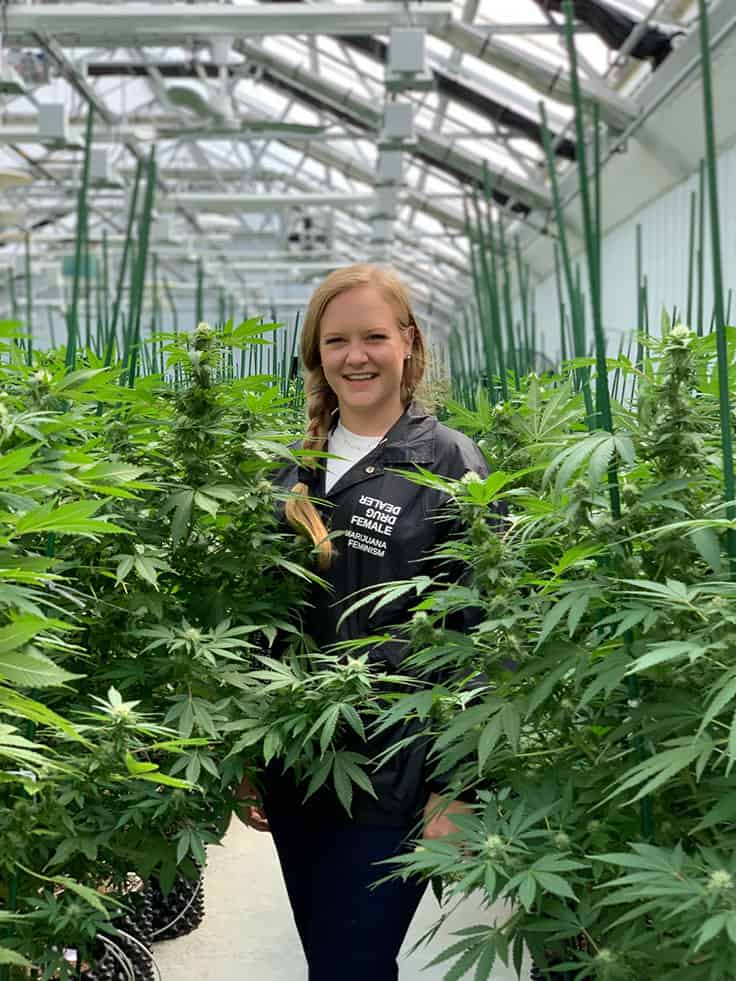 Hillary Peckham, COO, at Etain’s cultivation facility. Etain is a vertically integrated, medical cannabis company in New York’s medical program but plans to transition to the adult-use market. Photo courtesy of Etain
Hillary Peckham, COO, at Etain’s cultivation facility. Etain is a vertically integrated, medical cannabis company in New York’s medical program but plans to transition to the adult-use market. Photo courtesy of Etain
MS: As of April 13, there are more than 147,600 registered patients in New York’s medical cannabis program. In previous interviews, you’ve noted the importance of expanding qualifying conditions in the medical cannabis market to improve access, which this bill includes.
HP: Honesty I think what they’ve done is really fabulous. If the doctor thinks you will benefit with medical cannabis, then you can get access to it. So instead of having a legislated list right now, it will be much more open. It’s really critical, and it’s something we’ve been looking forward to now for years. It treats [cannabis] much more like a regular drug.
I think we’ll see a holistic change to medical program.
RELATED: New York-Based Etain Continues to Innovate Despite Limitations of Medical Program
MS: As an already established medical cannabis company in the state, what would you like to see as you transition and as the adult-use program launches?
HP: I think making the medical changes as soon as possible will really have a positive impact on the program and start to expand it, which will help drive scaling, etc., and by getting more patients in the medical program and giving more access. Right now, the thing that we are really just anxious about but can’t really comment on is regulation, or how this is going to work. There are still a lot of unanswered questions that I think have left everybody in limbo. There’s so much that needs to be figured out in the next steps that I don’t know what the path is going to be.
There are still a lot of unanswered questions that I think have left everybody in limbo. There’s so much that needs to be figured out in the next steps that I don’t know what the path is going to be.
MS: Do you have a proposed timeline or an idea of when you’ll learn more?
HP: Not yet, but we are scheduled and starting to have some conversations to try and figure that out. In the bill there are some effective dates of certain milestones, [for example,] home grow is effective for medical patients six months from the passage of the bill, so I would assume that is in line with when they are going to start making some changes to the medical program at a minimum. But there is a big administrative task to start up a new Office of Cannabis Management. So that is a huge hurdle that will just take time.
MS: What are your thoughts on the fact the bill creates a new regulating body, shifting responsibility of managing both the medical and the new adult-use program to the future Office of Cannabis Management governed by a cannabis control board?
HP: You’ve got medical, adult-use and hemp all under one regulating body, which I think is a great idea because all three of those impact each other. Treating them holistically will hopefully streamline regulations and at least people will be conscious of changes they make. Because the hemp market and access to CBD did have an impact on the medical market and the products that you can sell, so it’s important to have a regulating body that’s aware of the impact it’s going to have.
MS: What is the first step you are taking to adjust your business (both cultivation and retail) to cater to an adult-use market and most likely increased demand?
HP: Right now, one of the biggest changes to the medical market that will be relevant in adult use is that we [will be able to] sell whole flower. So, being able to [sell whole flower], which is the most requested product we’ve had since the beginning of the program, I think will be a really important change. From an operations standpoint, on the backend, [we need] to build out additional cultivation square footage and invest in more equipment for different product forms because in adult-use, there will be more allowable forms like edibles and things like that that we don’t currently have in medical program. The first step is [offering] whole flower because that’s the really important one for patients, and the rest is just scaling the business to get ready.
The first step is [offering] whole flower because that’s the really important one for patients, and the rest is just scaling the business to get ready.
MS: What changes in cultivation will you have to make to prepare to offer whole flower?
HP: We do have ground flower now. Part of that is to make sure it’s metered. When you have a tablespoon of ground flower that you’re then going to vaporize, there’s a certain dosage that’s associated with that, but it has to be ground to less than 5 mm, which is a very small particle size. A lot of times it can be confusing for patients or it’s not what they are familiar with using, so being able to have full flower will be a really good step.
We’ve been ready for this kind of change, and our process will need to change because curing will come into play whereas mostly the medical program has been focused on sterilization and making sure that it’s pharmaceutical grade before it goes out to the patient. So there will be some changes in process, but I think it will not be a huge impact.
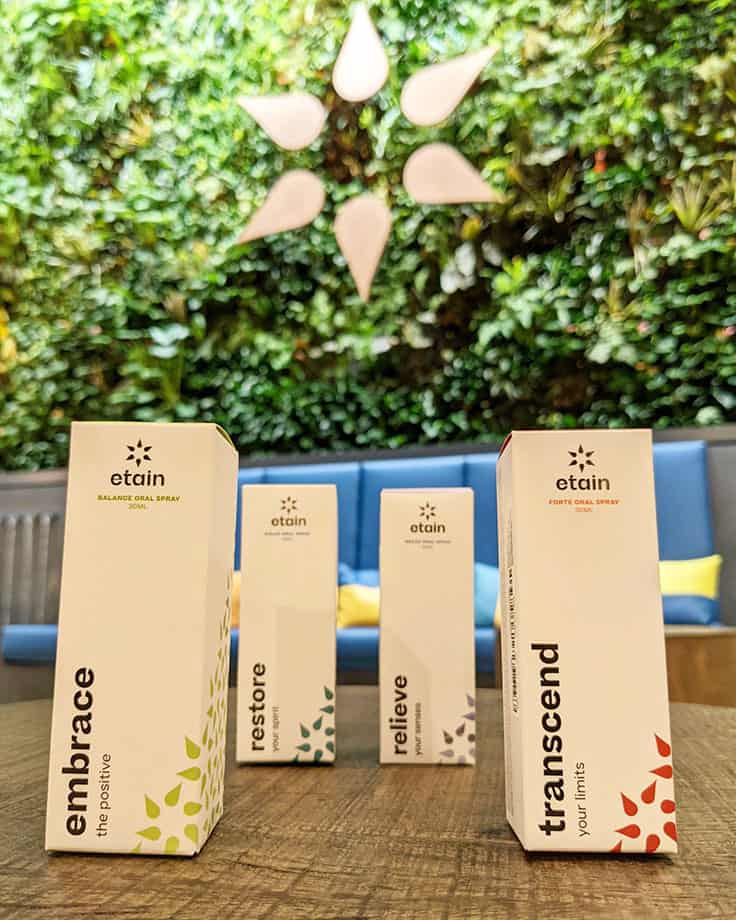 Etain’s newly rebranded packaging Photo courtesy of Etain
Etain’s newly rebranded packaging Photo courtesy of Etain
MS: What challenges do you anticipate in the transition?
HP: It’s our intention to stay women-owned and scale the business, and just figuring out how to do both. Because scaling takes access to capital, and we are trying to figure out our next steps in how to accomplish that, so that’s just something that’s on my mind. Are we able to reach the scale that we need or want right now with the resources we have? And then it’s just waiting for the regulations.
MS: What are the key opportunities for Etain?
HP: Having an existing footprint and just being able to leverage all the expertise we’ve had now for over five or six years, I think will be a really positive thing for us in this next stage. We know how to make a consistent, high quality product that our patients really like, and now we’re able to offer that and use that experience to a broader audience.
MS: You’ve noted in past conversations that the innovative consumption methods you offer were important to Etain to improve access to medical cannabis, but there were also many limitations in the medical market. How will you change/expand your offerings with more options in the adult-use market?
HP: I’m really excited about offering some of our existing products in an adult-use setting, with more applications. Like our water-soluble powder … I think that will be really popular because you can cook with it, you could put it in drinks, like cannabis cocktails. My sister [Keeley Peckham, chief horticultural officer], in addition to being in charge of horticulture, is an avid baker, and so she’s very excited about the opportunities with some edibles. We’re starting to reach out to some companies in New York City to try and gain some expertise, especially being in New York with so much culinary expertise. So it’s exciting to be able to think about that and start to plan for it, but we haven’t made any concrete decisions at this point.
MS: As only one of 10 cannabis companies operating in the state now, among multistate operators like MedMen and Curaleaf, how are you positioning your business to get ready for increased competition?
HP: We just initiated and launched a total rebrand of the company. So establishing new packaging and making sure we have messaging, and a better way of communicating who we are already to people. We reformulated all of our products and the packaging and just started launching that March 1, when we got it all in stores. We opened our flagship Manhattan store in August, so we’ve started to establish more of a footprint and branded materials. We are already starting to account for the fact that there will be increased competition. We also have a lot of experience that we can leverage that will be helpful moving forward. The new marketing materials also communicate our founding story and why we are doing this.

